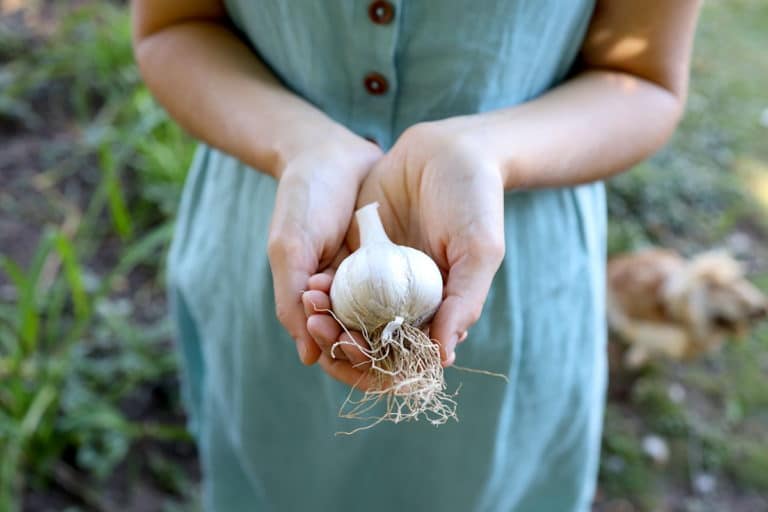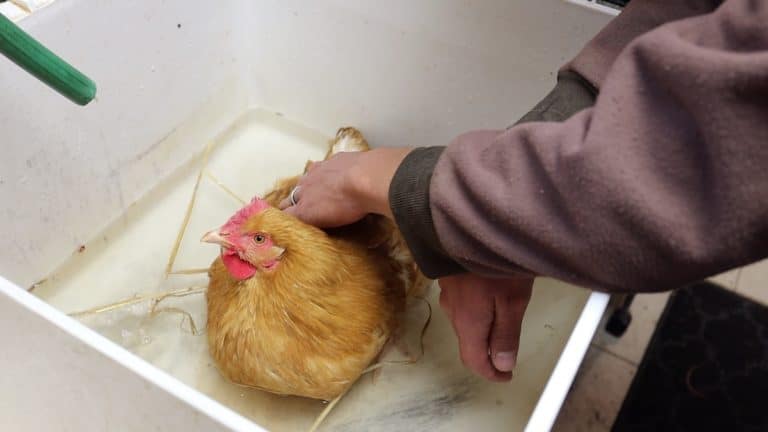Breaking Down The Cost Of Chickens For Eggs
How much do backyard chickens cost? Will they pay for themselves? Can I even make money selling eggs? These are common questions when considering a flock of laying hens. Let’s break down the cost of chickens—both to get started and monthly.
Your Cost For Chickens Will Vary
Everyone’s costs for raising chickens will be different. Your costs will depend on the number of chickens you have and their breed, your chicken coop setup, how you raise your chickens, and your location.
In this post we’ll mostly be looking at OUR personal costs for raising backyard chickens on our 5 acre homestead. We’ll also be sharing some of our experience and costs of raising chickens in our backyard when we lived in the suburbs.
As a baseline, we currently live on the outskirts of suburbia in a semi-rural area in the midwest. The prices we reference here are the prices we found locally in our area as of August, 2023.
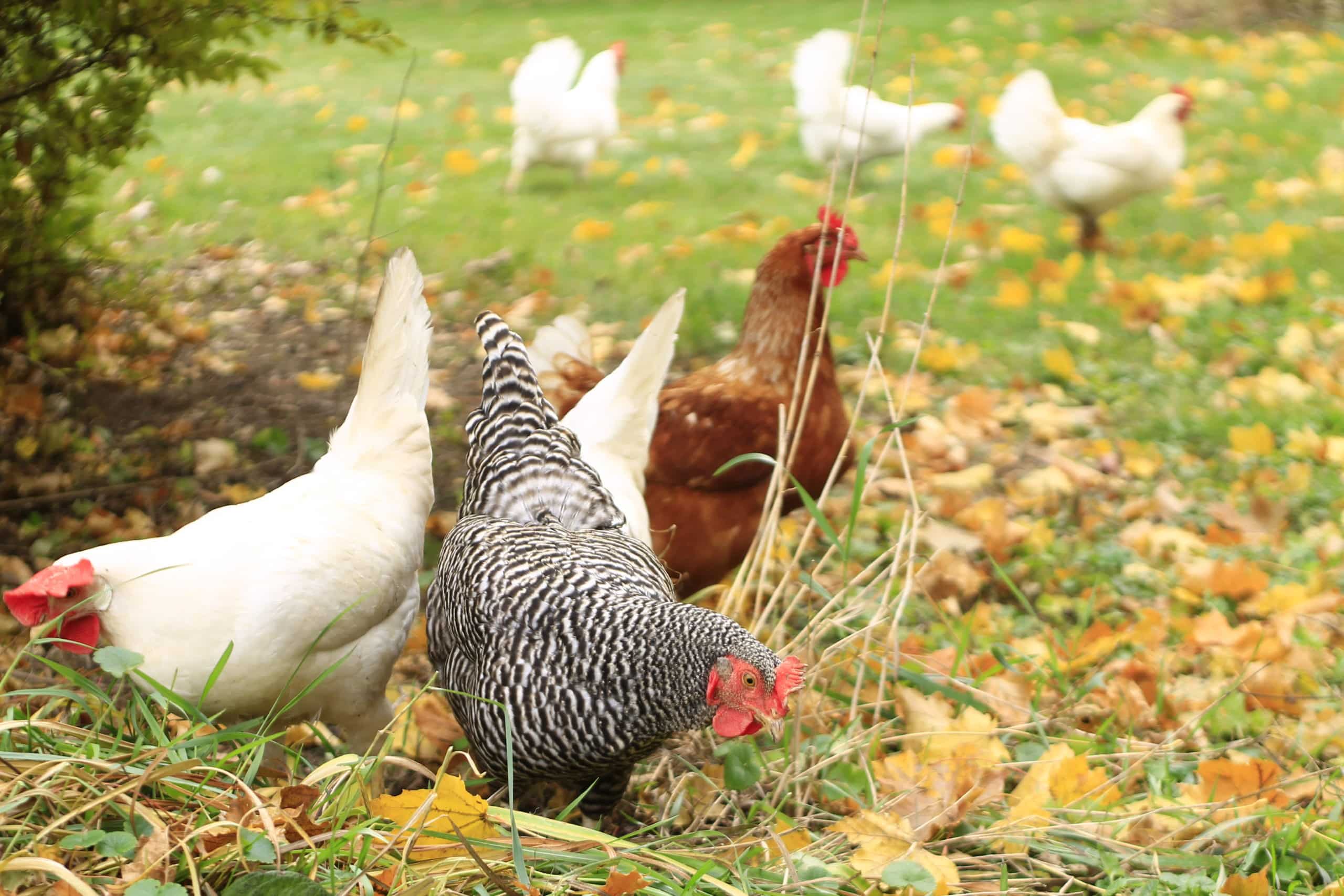
If you live in a more urban area, you may find pricing to range 10-20% higher. If you’re more rural, you may be able to find comparable items for 10-20% lower. At least that’s been our experience first living in the suburbs, then moving to the country, then moving to our current spot.
To breakdown the cost of chickens, you need to look at both the one-time start up costs, along with the monthly or annual ongoing costs. So let’s start there!
Startup Costs for Backyard Chickens
You should be able to get started with backyard chickens for around $500-$1,000. Your most significant cost will likely be your coop. The remainder of the supplies are pretty basic and won’t cost you an arm and a leg.
Let’s look at what you’ll need:
Coop ($100-4,000)
When it comes to chicken coops, here are some things to consider:
- Will I buy new or used?
- Can I build it myself or will I buy something pre-made?
- How many chickens will I want my coop to hold?
- Will it be mobile or stationary?
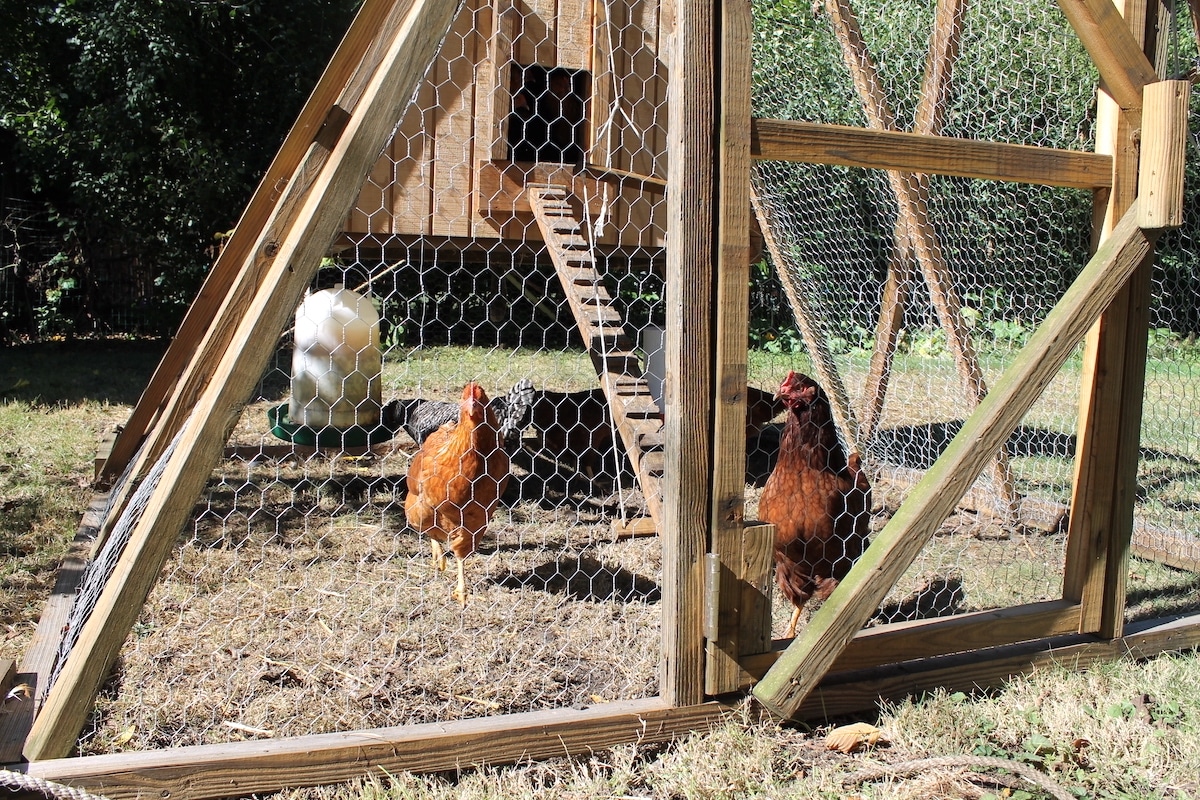
All these factors will impact the cost of your coop. For instance, many used chicken coops can be found on second hand sites like Facebook Marketplace or Craigslist for a few hundred dollars or less. This is a great route if you’re looking for something cost effective to get you started. Building your own coop can also save quite a bit by only needing to purchase the materials.
More and more custom chicken coop builders are popping up that make gorgeous, picturesque looking coops. While they’ll make your backyard look magazine worthy, expect to pay a premium price—likely in the $2,000-$4,000 range, or more.
Another category are mobile chicken coops called chicken tractors. Some are designed to slide on skids or rails, while others have wheels. Some chicken tractors are even built on top of a trailer. Chicken tractors can sometimes cost more than a standard stationary coop.
If you are starting out and looking for a pretty basic kit chicken coop, you’ll want to budget in the $500-$1,000 range.
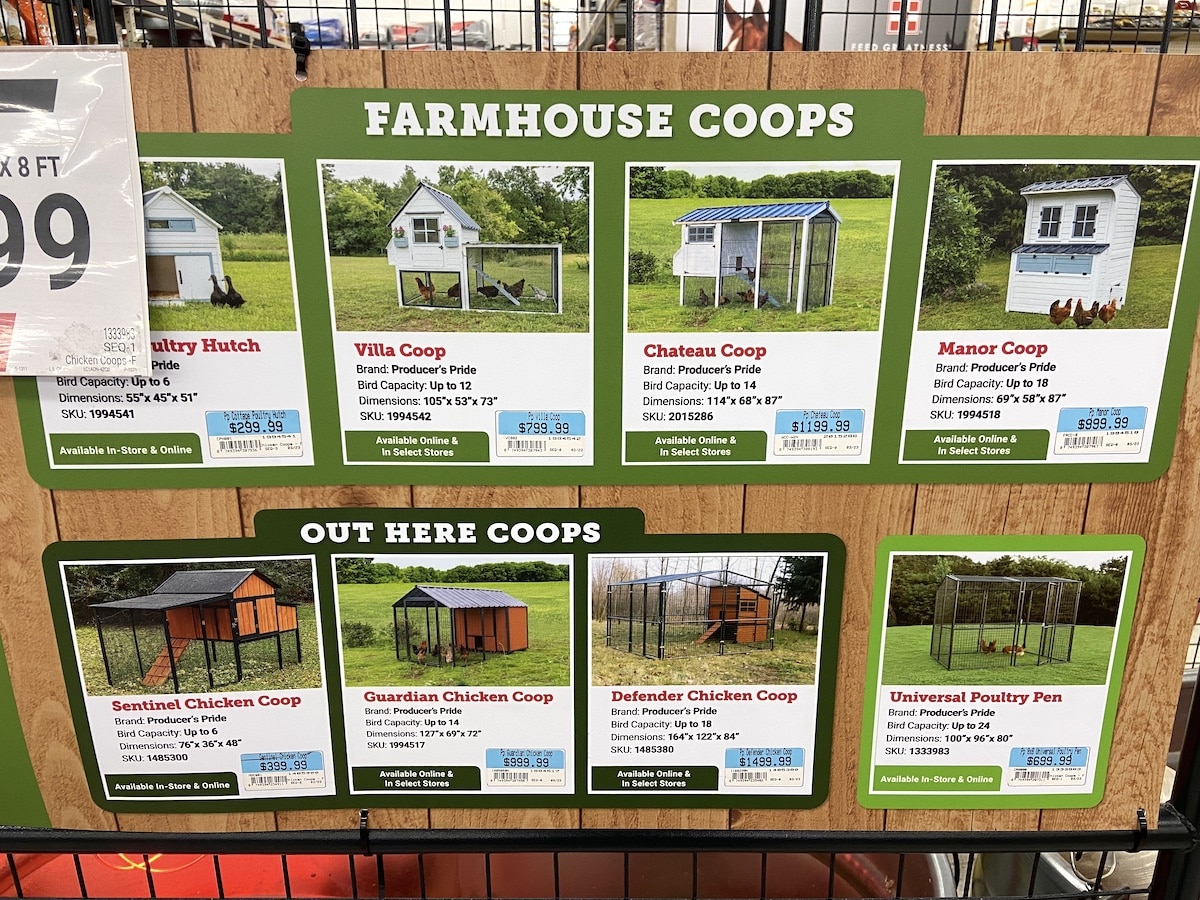
Predator Proofing ($50-100)
Don’t overlook predator proofing! Just buying a coop and setting it up on the ground with the underside exposed will likely end in disaster!
Have a plan to predator proof your coop before it’s in place. Our post—Predator Proof Chicken Coop Essentials You Need To Know—can help you think through what is needed for keeping your chickens safe in your coop.
At a minimum, I’d recommend an apron of hardware cloth along the base of the coop. Or, better yet, digging under the entire coop and lining the underside with hardware cloth to assure nothing will dig under. Hardware cloth or other predator proofing measures can be pricey and time consuming, but it’s money well spent.
At a minimum, I’d recommend budgeting $50-$100 dollars to buy some basic supplies and make sure your coop is as secure as possible.
Feeder & Waterer ($50)
Most chicken coops will need one feeder and one waterer. These typically cost about $25 each for an average size. Larger sizes will cost more. Smaller sizes will cost less.
There’s lots of different designs out there, but we’ve always just used this basic feeder and waterer and had a good experience.
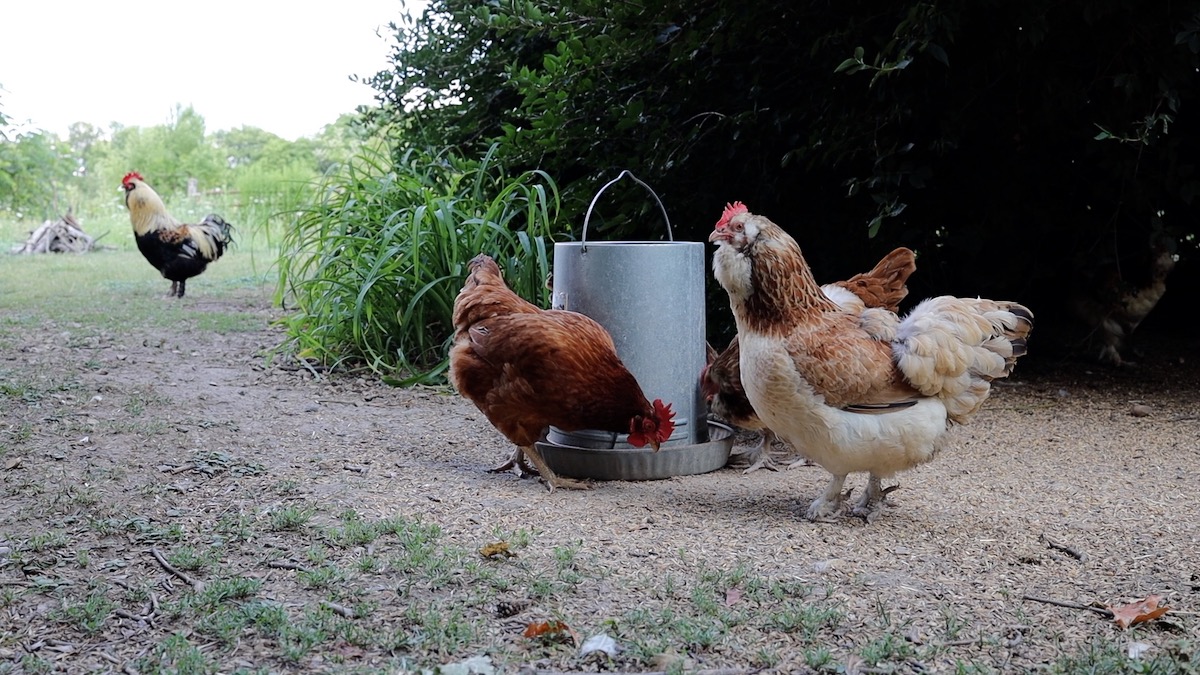
Winter Chicken Supplies ($50)
This may or may not apply depending on your area, but if you’re in a cold region where temps get below freezing on a regular basis during the winter months, you’ll need some additional supplies.
First up is a way to keep your waterer from freezing. There’s plenty of options for heated bases or even waterers with a built-in heating element at your local farm supply stores. These provide a simple starting point.
The thing I’ve found is that all heating elements eventually fail and, when that happens, you need to just start over and buy a whole new one. That’s why I came up with this DIY Heated Waterer Base design that has worked great for us for a few years now. Plus, all the parts are easily replaceable!
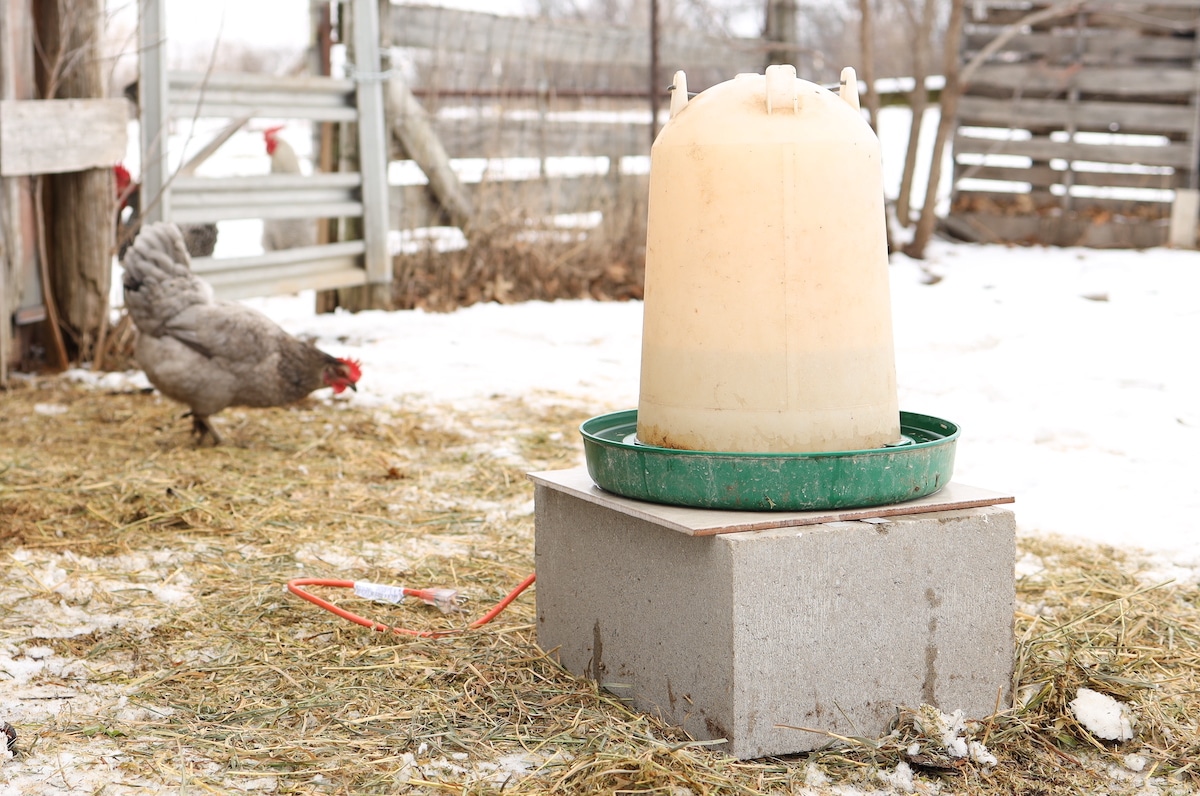
If your coop is exposed to the elements you’ll also need a way to cut down on frosty drafts and possibly even insulate the coop. This can be as simple as wrapping part of your coop in plastic sheeting or stacking some bales of straw around your coop for added warmth and wind protection.
Check out our Keeping Chickens In The Winter guide for more on that.
Brooder ($20-$40)
Starting with baby chicks is usually recommended for new chicken keepers. This gives your chickens a chance to bond to you, you to them, and them to each other for the most cohesive flock experience.
While raising baby chicks doesn’t require a degree in animal husbandry, you will be caring for them in their most vulnerable state and will want to make sure they have what they need. A brooder is your starting point for this, which is a box or small space that has all the basics your chicks need like food, water, a source of heat, and dry bedding.
If you’re only raising a few chicks, many simply use a plastic storage tote for this. We started with a heavy duty cardboard box in our living room. If you have 10 or more chicks, you may need a larger brooder. We’ve used both a spare stock tank and a shipping crate and converted them into fine brooders for raising 30-40 chicks at a time.
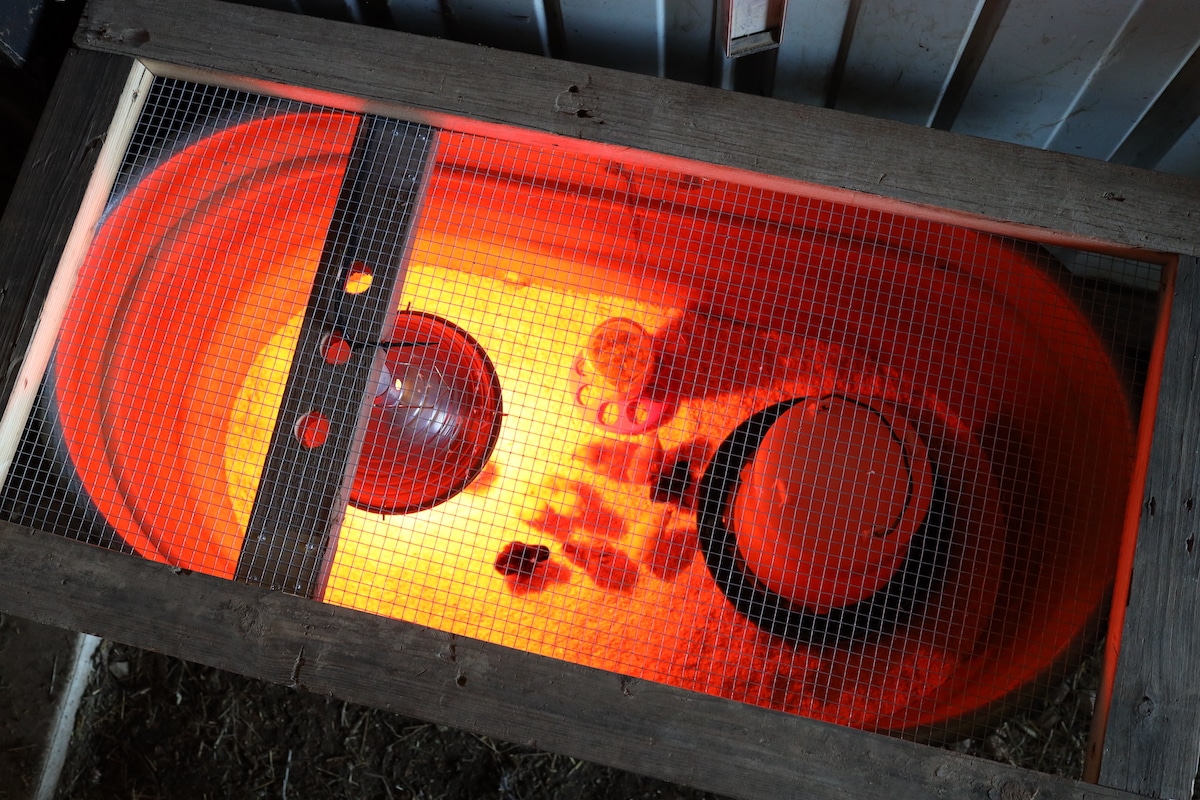
You most likely have a box or tote on hand you can use as a makeshift brooder to get started. Or buying one may cost $10 or less. Add a heat lamp and bulb ($20) and a bag of bedding ($10 or less) and you’re ready to go with a brooder for around $20-40.
Chicks ($2-$10/ea.)
Yes, chicks! Finally the fun part! Depending on your location and the options that are available, chicks can either be quite inexpensive, or quite costly.
On the low end, chicks will cost around $2 each from a local hatchery. Buying the same chicks from your local farm supply store or feed shop will likely bring them to the $4-$6 range. And really remote areas without great retail or delivery options may find them significantly marked up.

Sometimes you can also find pullets. These are young chickens anywhere between 4-16 weeks of age that have not yet started to lay eggs. The benefit is that pullets will begin laying eggs for you sooner. Plus, they’ve already survived the most fragile early days and weeks of a young chickens life. Pullets will cost anywhere between $15-$35 depending on the age and breed.
Run/Fencing (*optional)
A chicken coop run is a larger open area, separate from the enclosed area of the coop, where chickens can roam and forage in. Many coops come with a run already built in. If not, or if your run seems small, you’ll want to consider how your chickens will get plenty of access to the great outdoors.
Building a run is usually less costly than building a coop. Runs are often constructed with a wood, metal, or PVC frame that is lined with either a netting or mesh like hardware cloth or chicken wire to keep chickens in and predators out. Kits for runs also exist.

Alternatively, you also have the option to free-range your chickens. When free ranging—depending on your setup and location—you may need to consider fencing to keep your chickens from meandering too far from the coop.
When we lived in the suburbs we started with some basic fence posts and snow fencing. This cost us around $100 and worked alright. Poultry netting is a more secure route to go, but expect to pay at least a few hundred dollars to get started with a couple sections of electro-netting fencing and and an electric fence energizer. Permanent fencing will cost significantly more.
*The cost of chicken runs and fencing can vary widely. This category is optional and entirely customized to your needs. But it’s worth mentioning here as a potential startup cost for chickens. Your best bet is to consider your needs, look into options, and price everything out accordingly. Additional run space or fencing might also be something you can add as needed down the road.
TOTAL STARTUP COSTS
Say you are planning to go out to your local farm supply store to pick up 6 baby chicks, set up a basic brooder, purchase a standard coop with no extra run/fencing needed, some predator proofing, feeder, waterer, and basic winter supplies, you’re looking at about $720 to get started.
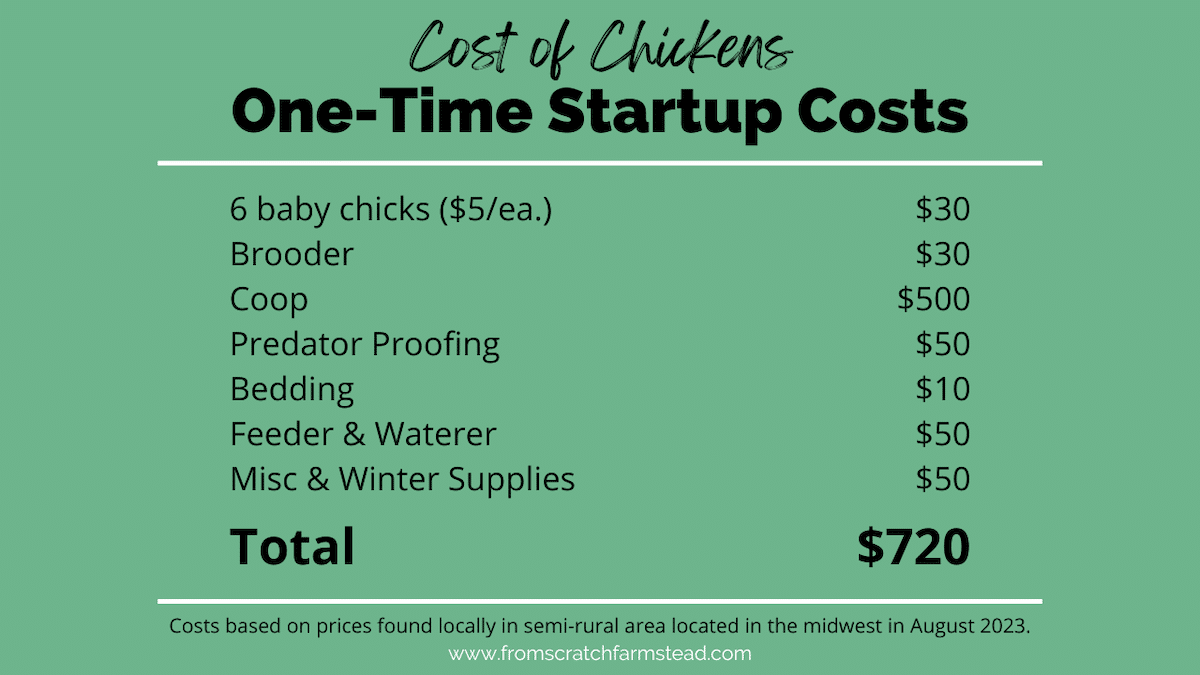
There are lots of ways to spend less—like buy a used coop and supplies or build everything yourself. And you can certainly spend more. But this gives you a ballpark number for just going out and purchasing the basic kit coop and supplies to get started with a small flock of backyard chickens.
Monthly Costs for Backyard Chickens
On average, we spend roughly $200 per month for around 50 laying hens, or about $4 per chicken. If you calculate the low end and high end of what is costs to raise a chicken, expect to pay between $3-$8 per chicken each month.

As we saw above, the one-time startup costs for chickens can be pretty reasonable. But the ongoing monthly expenses are really what will add up and be most significant over time.
This is why we encourage you to really do your homework upfront in the following cost categories. Doing so will help you set realistic expectations for what it will cost monthly and annually to keep your feathery flock happy and healthy all year—and not be shaking your fist at the ongoing expenses.
Let’s look further into each category.
Chicks ($2-$10/ea.)
Yes, baby chicks were in the startup costs. But if you plan to keep your flock in peak laying mode, replacing older hens, maybe even yearly, is the way to go.
The older a hen gets, the less eggs they will produce. Beyond a couple years old, it gets hard to justify keeping them around solely based on egg production. When this is the case, raising up new replacements is in order.
To maintain our flock of around 50 layers, we get 30 new chicks every spring. There’s always a couple chicks that don’t make it, we typically lose a few hens every year to hawks, and then we cull off a good chunk of our oldest birds that aren’t producing as much anymore.

Culling is intentionally reducing your flock size. You can do this by re-homing some hens, selling them, or turning them into stew hens. While this can be a challenging and emotional part of the chicken raising process, it also gives you the opportunity to bring new hens into your flock and keep egg production up!
Feed ($14-40/bag)
Feed will be your most significant monthly cost for backyard chickens. Your local feed store or farm store will likely have no shortage of options and the price point of each can vary widely.
A single chicken will typically eat between a 1/2 cup – 1 cup of feed daily. This can vary based on the seasons; chickens will often eat more in colder winter temps to keep their body temps up; and they may cut back on feed intake during the warmer summer months. For chickens that are laying, you will want to look for a protein content of at least 16-18%
Just like people food, you pay for quality ingredients. Organic feed mixes will be more expensive than non-organic. Higher protein ratios, or higher quality sources of protein, will cost more too. Some feeds avoid certain ingredients like soy; often a soy-free feed will cost more. Pelleted feeds can help reduce waste, but often cost a few dollars more per bag compared to the crumble version.
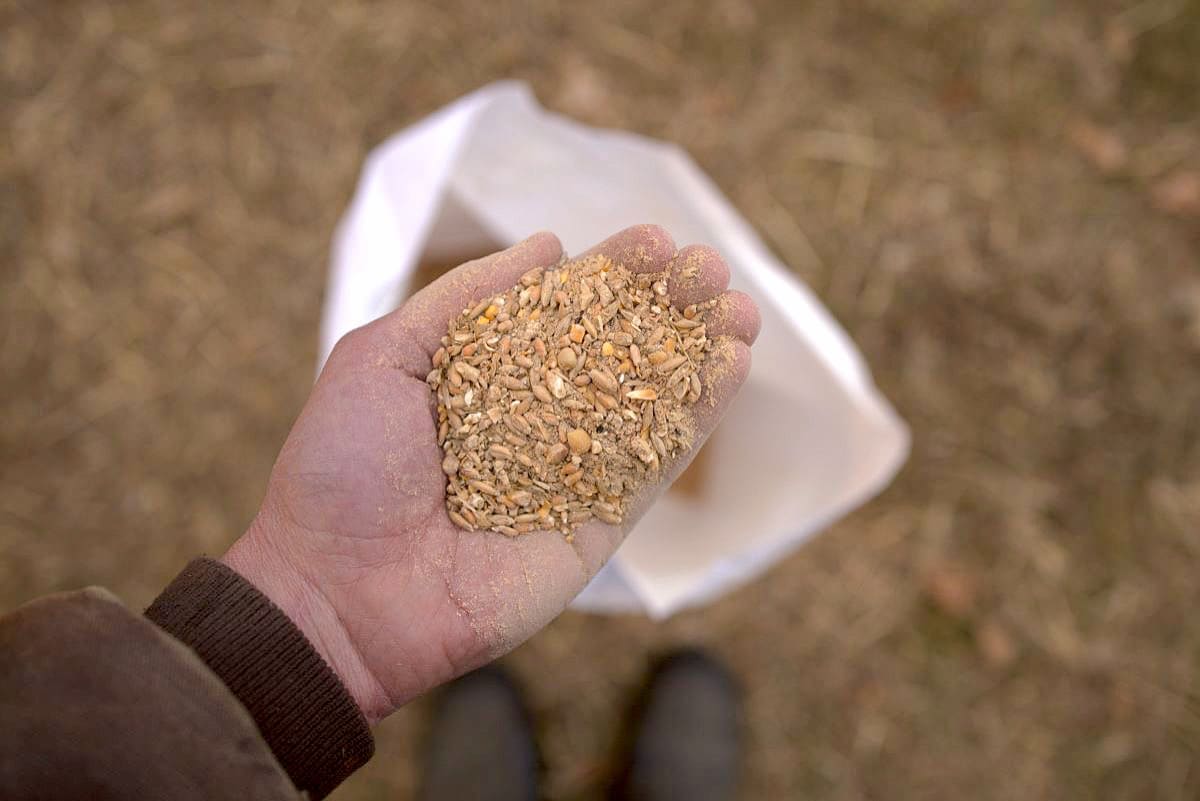
I did some scoping out of the chicken feed options in our area. The lowest cost was around $14 per 40# bag for the economy, conventionally grown, 16% protein mix. Organic layer mixes with 18% protein ranged anywhere from $22-$40 per 40# bag.
Until recently, we’ve always purchased a high quality organic feed from our local feed store. The health returned to us in the most nutrient dense eggs possible has always been worth the added cost for us.
Now, we actually discovered a local organic grain grower who bags up his own mix of organic feed. Because his overhead is low and he’s selling direct to customer, he’s able to offer a very reasonable price—$22 per 50# bag. If you do some digging, these types of options may be available in your area.
Bedding ($5-$10)
Keeping your chicken coop dry and clean is a must. Therefore, you’ll want to keep on top of replacing bedding often.
The most common bedding options for chicken coops are wood shavings or straw. A bag of wood shavings typically costs $5-10. A bale of straw will also be about that same price range.
How much bedding is needed can really depend on the size of your coop and how much ability your chickens have to free range. Chickens that are cooped up all day will dirty up fresh bedding much faster than chickens that are free ranging outside the coop.
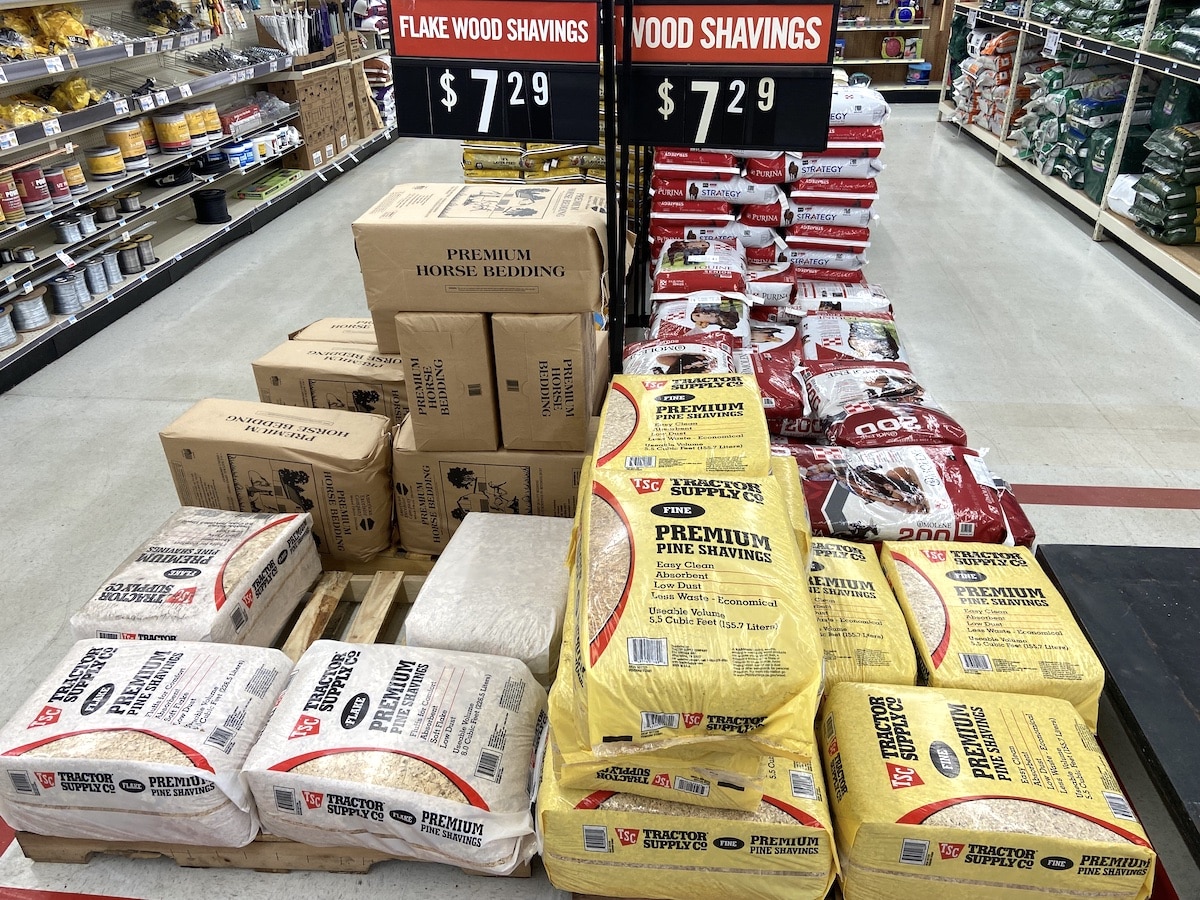
When we had one small backyard coop with 6 chickens, one bag or bale of bedding would normally last us multiple months. Now, with our larger coop inside our barn where the chickens free range all day, I plan on about 1 bale of straw each month that costs $5. You’ll also want to plan on extra bedding during the winter months where excess moisture buildup can lead to frostbite and other ailments.
A moveable chicken tractor is also a way to reduce the need for bedding. The enclosed area where chickens sleep will still need fresh bedding. But the coop itself is moved to fresh grass regularly eliminating the need for bedding in the run portion.
Bedding costs will vary based on how much you apply and how regularly you clean your coop.
Oyster Shells ($18/yr.)
Oyster shells provide 2 things critical to the overall health of a chicken—grit and calcium.
Grit is necessary for chickens to have proper digestion. And calcium is a critical component for egg production.
We give our chickens free choice access to oyster shells. A 50# bag costs around $18. We also supplement with giving them crushed egg shells for an extra calcium boost. The crushed egg shells are free since we recycle them from eggs we consume.
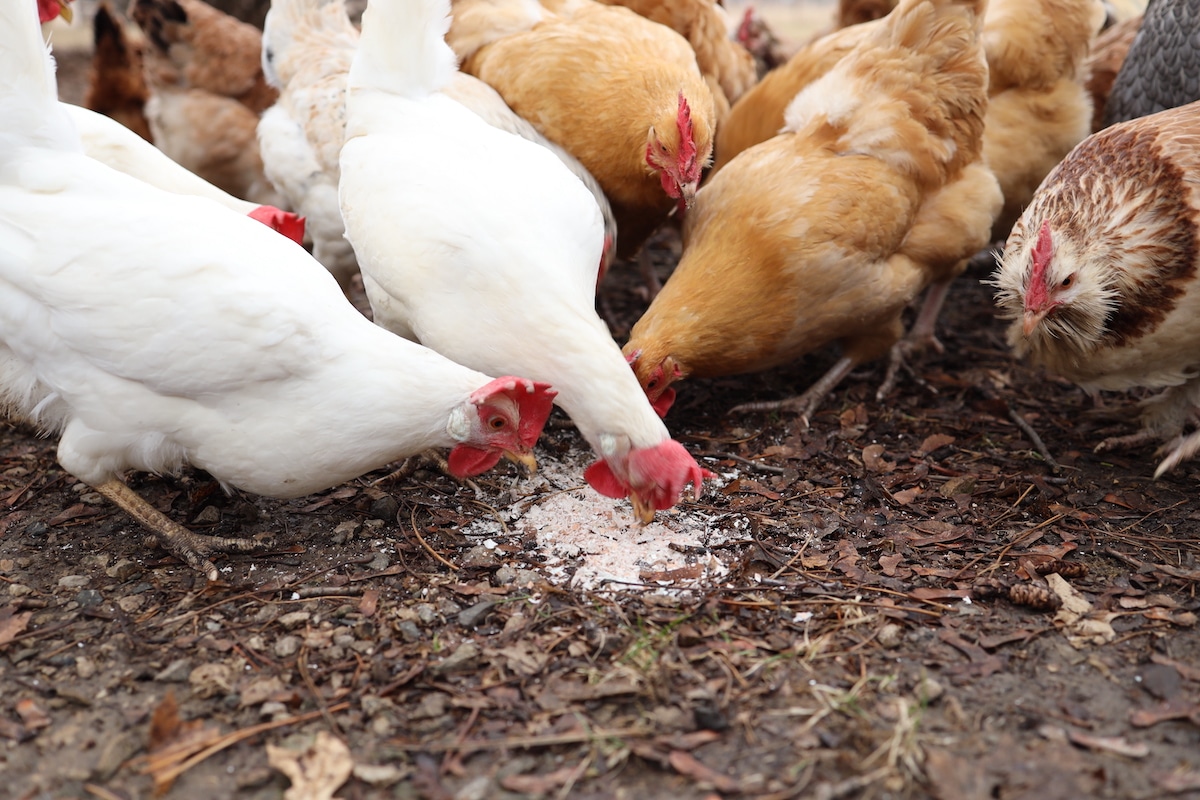
With the addition of eggshells, we use the oyster shells somewhat sparingly. I buy about one 50# bag of oyster shells per year for our flock of 50 chickens. When we had a smaller backyard flock with 10 or less chickens, one 50# bag lasted us multiple years.
Electrolytes ($5)
Electrolytes help keep your chickens healthy and hydrated. We’ve found this to be most critical for baby chicks. We don’t give our full grown chickens electrolytes as often, but still find it beneficial for their overall health.
Our favorite electrolyte is apple cider vinegar. One bottle of organic apple cider vinegar will cost around $5 at the grocery store and lasts us about a month. Plus, they get the added probiotic benefit that ACV offers. Just add a couple glugs into the chickens waterer every time you fill it and you’re all set.
Emergency Chicken Supplies
We’ve found a few home chicken remedies helpful to have on hand. Or, at least know where they’re available for quick pickup locally if issues pop up in the flock.
The first is Blu Kote. This antiseptic dye is our go-to healer any time a chicken gets a wound. Not only does it help heal wounds quickly, but the blue dye hides blood. Blood can send chickens into a frenzy where they start pecking at the wounded chicken making things much worse.
Sometimes, chickens can become egg bound or even have a prolapsed vent. For this, dissolving epsom salts or magnesium flakes into a warm water bath to help ease your chicken may just do the trick.
Chicken Treats (Optional)
While there are many gadgets and gismos, toys and treats out there for chickens, we like to keep it basic. Give them high quality food, safe shelter, and the freedom to go out and forage, and your chickens will be living their best life!

But sometimes, an extra source of protein is an extra special, and maybe even necessary, treat.
Meal worms and black soldier fly larvae are two common options to give your flock some supplemental protein. We don’t go crazy and give them these treats every day. But on occasion, and especially in the wintertime when foraging for bugs is limited, some added protein can really help improve their overall health.
What DON’T We Spend Money On
Everyone has different opinions on how to raise chickens and what to spend money on. So, from our viewpoint, here are things we avoid purchasing.
Egg Cartons
Unless you are really planning on going after an egg laying business and dead set on having your own unique packaging/branding, buying egg cartons just isn’t a necessity.
Any time we are getting low, we just put it out there to family and friends, and someone is always willing to collect up a massive stash of egg cartons to bring you.
Buying eggs in mismatched cartons is just part of the charm of buying farm fresh eggs!

Vet Bills
We have never had a vet look at our chickens. Yes, we’ve lost some chickens from sickness along the way. It’s hard and tragic every time.
But we’ve never been able to justify the high cost of bringing them to a vet. And from what we’ve heard, there is little a vet can do for a chicken in many cases.
This is why we prefer to have some home remedy options available to be able act quickly, and inexpensively when issues do pop up. And, just like with people, the more you’re able to give your chickens the best diet possible and raise them in clean and healthy conditions, the more long-term health issues you’ll be able to avoid.
Bedding
When we lived in the suburbs, we almost never purchased bedding. This is because we used mulch for bedding and mulch can often come free. Most communities have a free mulch pickup spot available if you do some searching.
I found mulch to be a fine bedding substitute and loved that I never had to pay for it. I would still have a bag of wood shavings to put in the laying boxes, but 1 bag would last a long while.

Heat Lamps
Yes, you’ll probably need a heat lamp for a chick brooder. The other time you might be inclined to plug in the heat lamp for your girls is during the winter. Don’t! It’s not necessary and it can be dangerous!
Plus, the other cost of heat lamps that often goes unnoticed is the constant suck of power that will skyrocket your electrical bill! We notice the jump up every spring for the month or so when chicks are in the brooder and 1 or 2 heat lamps are running.
Find other ways to cut down drafts or insulate the coop and avoid paying the huge utility bills for those heat lamps all winter long.
How Many Eggs Will I Get From Backyard Chickens?
You can’t fully analyze the cost of chickens without understanding what you get from them in return—eggs.
Egg production fluctuates. There are seasons where egg production is high and stable. And there are seasons where egg production bottoms out and is unpredictable.
A chickens egg production can be impacted by: their age, if they are molting, length of daylight, weather extremes, breed of chicken, feed quality and quantity, stress levels, predator pressure, and injury or illness.
The most productive breeds of chickens will typically lay around 250 eggs per year—some more, some less. Or, to phrase it another way, they would lay eggs two days in a row, then take the 3rd day off.
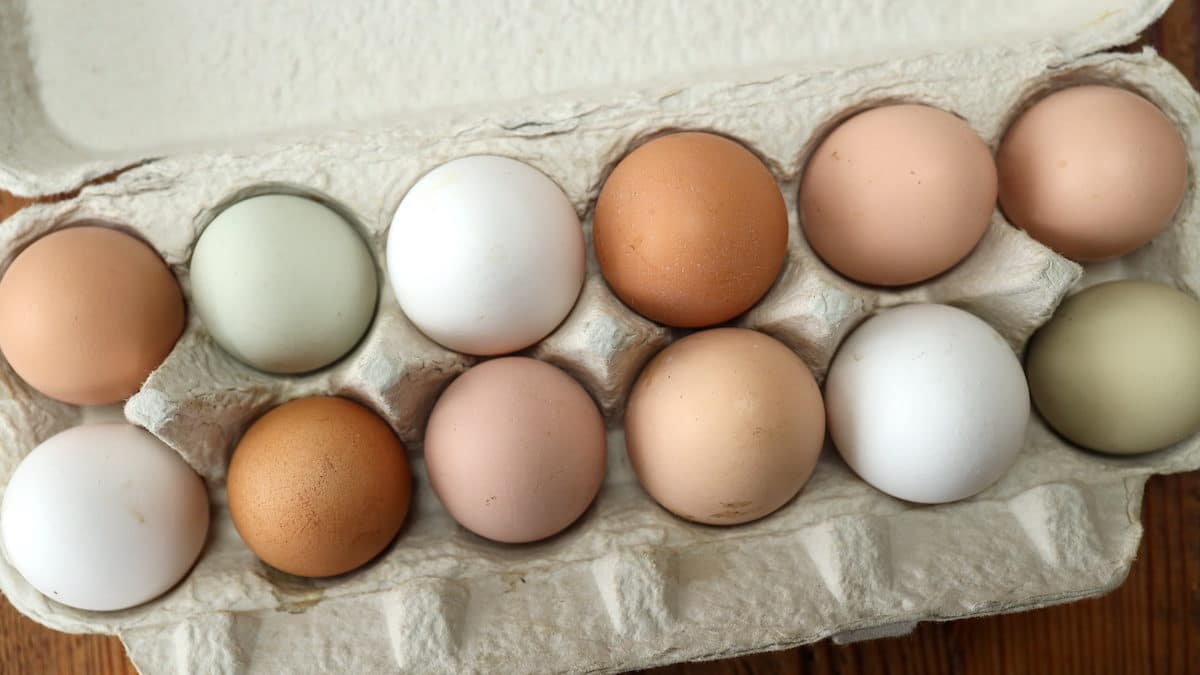
The issue is that chickens are usually only in peak laying form during their first year or two of life. Beyond this, their egg laying will decline each year. Keeping your flock in peak production requires a significant and intentional effort to raise up new replacement layers and cull off those who’s production has dropped.
Plus, when raising from baby chicks, egg laying won’t even begin until they’re 18-22 weeks old.
While we’ve enjoyed seasons of higher production, our current flock of 50 chickens have only been giving us 12 eggs on average for the last month. At $200 per month in expenses, that’s a tough one to swallow!
But the breakdown of that flock is around 20 layers and around 30 pullets. The layers are either 1.5 or 2.5 years old and some are molting. And the pullets are all getting close to laying, but not there yet. And it doesn’t help that we lost around 5 of our prime layers to hawks in the last couple months!
Our goal here is to paint a realistic (not bleak!) picture of egg production. Once our 30 pullets start laying, things will turn around quickly. But right now, our family of 6 that eats about a dozen eggs a day is barely getting what we need!
Can Backyard Chickens Pay For Themselves Or Earn Income?
In short, yes. Backyard chickens can definitely pay for themselves or even earn you income as a side business. But, as we just looked at the realities of fluctuating egg production above, don’t expect it to be a walk in the park.
We’ll use our family’s flock of 50 laying hens as an example. At $200 per month, we have around $2,400 each year in expenses to raise our chickens.
The going rate for organic, free-range eggs in our area is $5-7 per dozen—we sell ours for $5/dz. This chart shows our earnings potential at different egg laying intervals.
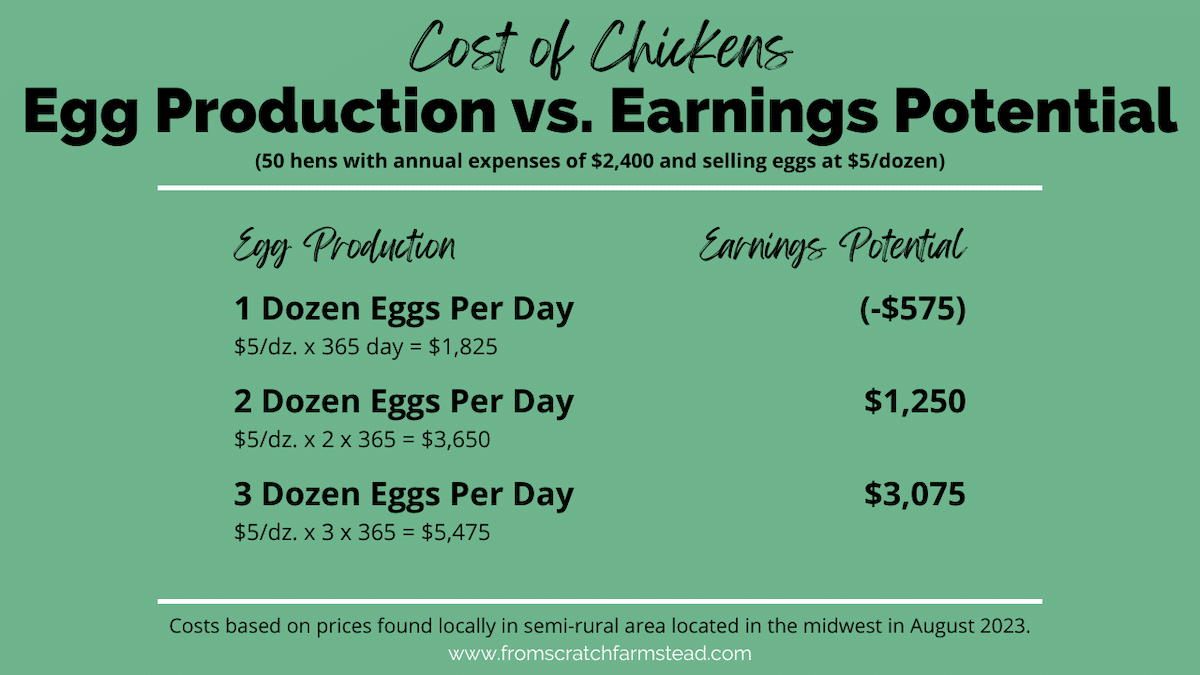
The chart itself is overly simplified. The reality is that our family alone eats around 1 dozen eggs a day, which is not reflected in these numbers.
So with only receiving 1 dozen eggs a day from our flock in their lowest production, not only are we barely keeping up with our family’s needs, but we’d actually be spending less to buy eggs from someone locally at that rate.
Only when our flock hits or exceeds the 2 dozen eggs per day mark do we come close to breaking even and having the chickens pay for themselves.
At 3 dozen eggs per day, with 1 dozen eggs going to our family, 2 dozen eggs being sold at $5/dz., and taking out our annual expenses of $2,400, then we finally see a modest profit of $1,250.
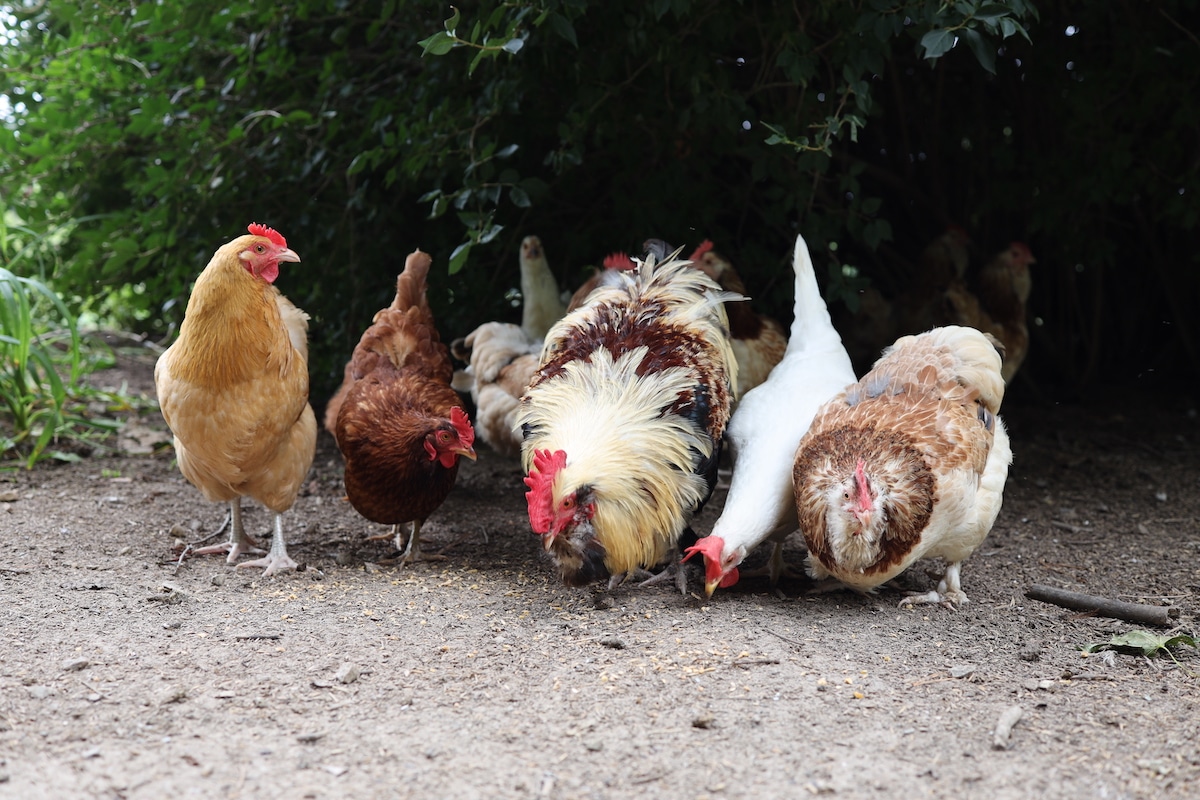
Maybe your family doesn’t eat as many eggs are ours. And if we wanted to, we could probably sell eggs at $6/dz. and make a bit more. But as you can see from this scale and example, you’re likely not going to get rich off selling eggs. But it can provide some extra spending cash!
That’s why we’ve always aimed for having our chickens pay for themselves with egg sales. This seems like the right blend of achievable and a worthwhile investment of our time and dollars.
Are Backyard Chickens Worth It?
In our honest opinion, cost is not a significant factor for or against keeping backyard chickens. Buying eggs from a local farm would likely be the most cost effective option for us; and certainly the most convenient when you consider our time investment.
But there are so many non-monetary benefits that we get every day from our feathery friends!
Our kids get introduced to daily responsibilities like collecting eggs and giving them food and water.
We enjoy hours of free entertainment with their peculiar mannerisms and goofy waddles.
We get to be part of growing a resilient and localized food system that sees the frailty of globally produced factory foods.
Those are things you can’t put a price tag on. And that’s why we’ll always say backyard chickens are worth it, regardless of the cost!
How about you? Where are you at in your chicken journey or where do your costs fall? Drop us a comment! We’d love to hear from you!
Some of the above links are affiliate links. This means we earn a small commission on qualifying purchases at no cost to you. We are so appreciative of your support!
More Posts on Backyard Chickens:
What Should Be Inside A Chicken Coop – Easy Guide!
Custom A-Frame Chicken Tractor For (Almost) Free
Predator Proof Chicken Coop Essentials You Need To Know
Easy DIY Heated Chicken Waterer
Chicken Roost Designs | Two Simple DIY Ladder Perch Ideas
How To Care For Chickens In The Winter Basics
Simple Outdoor Chicken Brooder Ideas
How To Care For Baby Chicks
Feeding Chickens Egg Shells (Why, When, & How)
Simple DIY Chicken Coop Inside Your Barn
Pin it for later!



